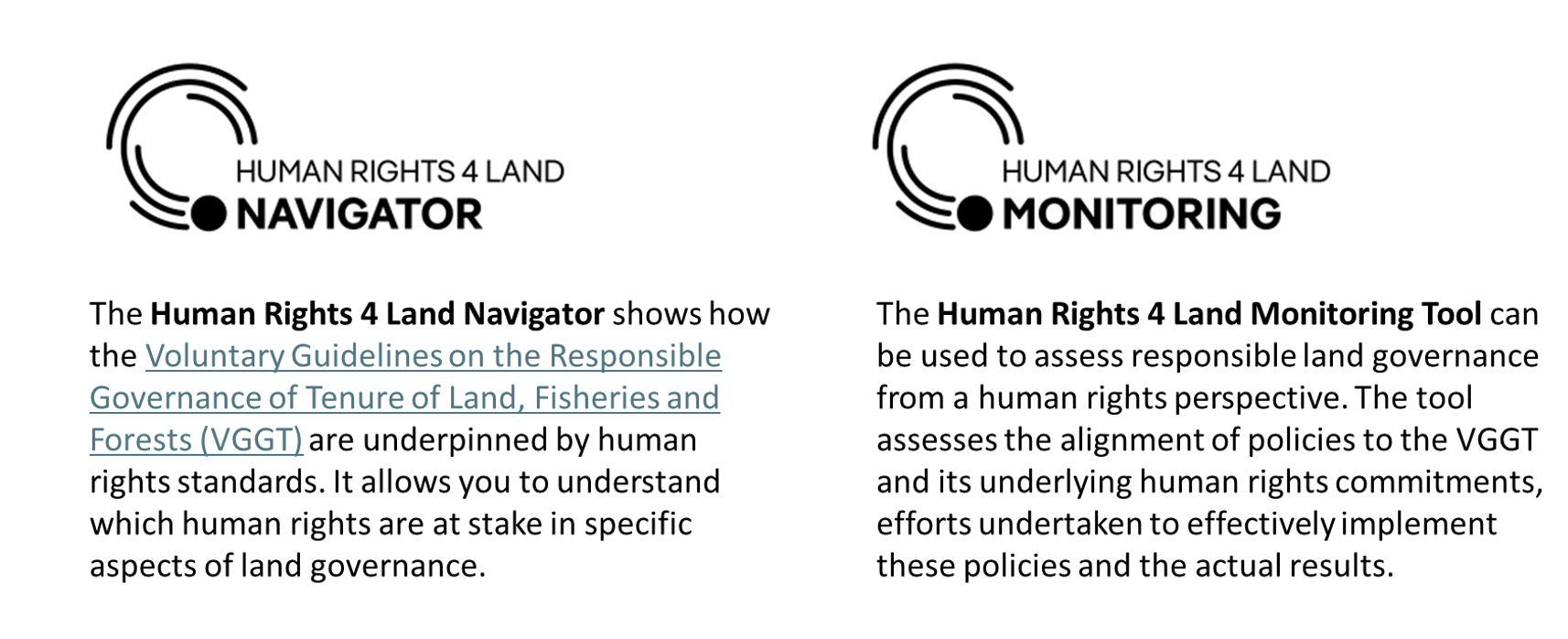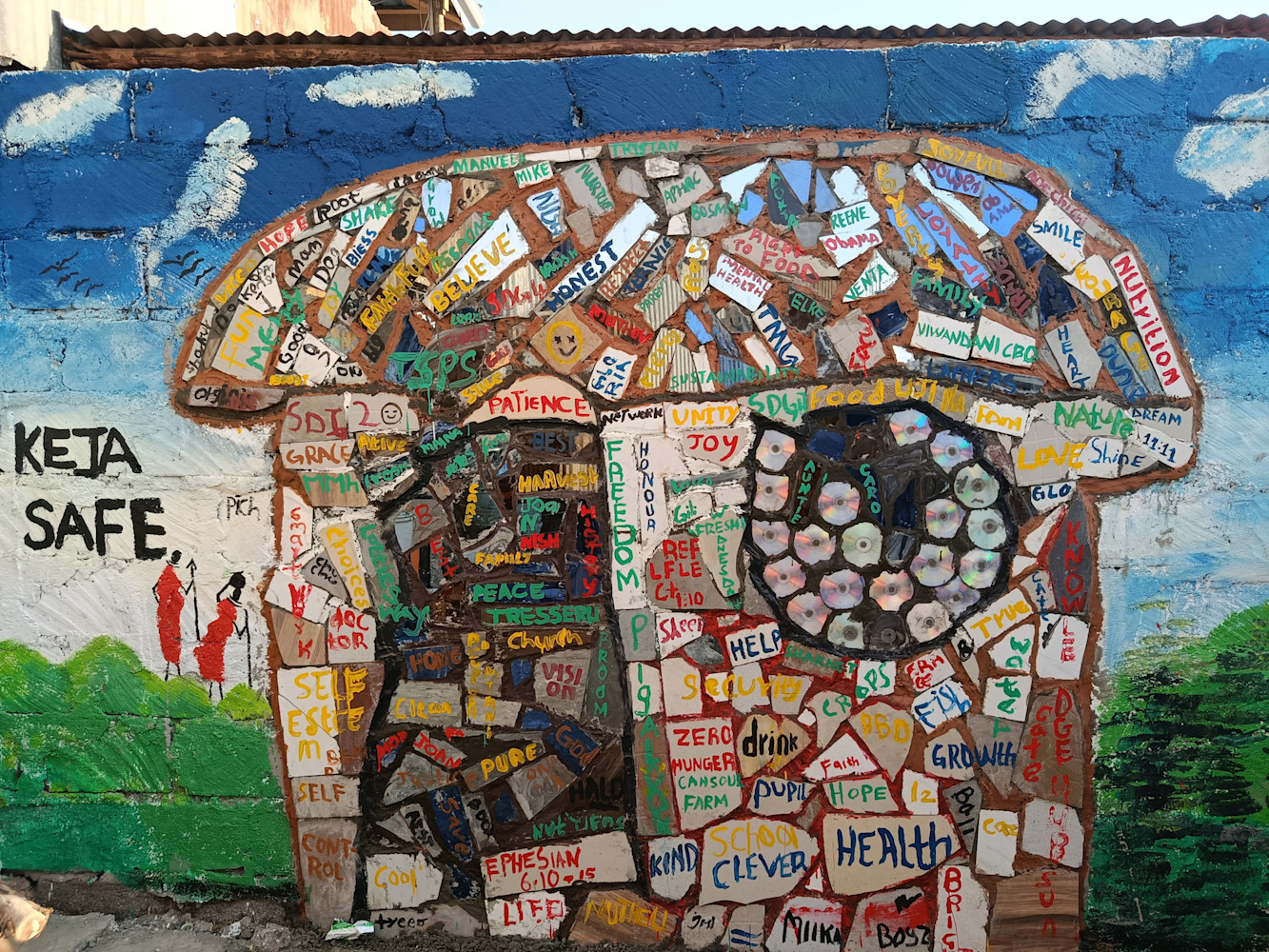Rights4Land tools revamped: accessible, comprehensive, and localized
Rights4Land tools were revamped to include human rights instruments that better suit local needs and further equip activists and governments with information critical to upholding land rights.
by Ilse Pelkmans | 2024-05-08

In 2022 and 2023, TMG Research and partners launched two Rights4Land tools that help land and human rights defenders to connect human rights and land governance. Since their launch and pilot implementation in Malawi, both tools have also been introduced to Civil Society Organizations (CSOs) working on land rights, as well as the National Human Rights Commission of Ethiopia, Kenya and Sierra Leone. Inspired by our work together, the tools were revamped to include human rights instruments that better suit local needs and further equip activists and governments with information critical to upholding land rights.

Considering the interest in these tools expressed by land and human rights defenders and their uptake by different actors, significant improvements were made to the tools, in collaboration with the Danish Institute for Human Rights. They are now more accessible, comprehensive, and localized.
Human Rights 4 Land Navigator now includes pivotal regional human rights instruments and newly adopted General Comments
At the launch in 2002, the Navigator only included the international human rights instruments. For example the covenant on civil and political rights (ICCPR), the covenant on economic, social and cultural rights (ICESCR), the convention on women’s rights (CEDAW) or the declarations of rights of rural and indigenous peoples (UNDROP / UNDRIP).
Update 2024: Regional Human Rights Instruments
The new version of the Navigator now also includes regional human rights instruments, with human rights obligations that are highly relevant in the context of land governance. These include for example the African Charter on Human and Peoples’ Rights (ACHPR) and the Maputo Protocol on women rights in Africa. This extension of the tool was done based on feedback provided during the launch and pilot of the tool in 2022.
Why are regional instruments important? The human rights standards as included in the regional instruments are often more contextualized and tailored to specific human rights concerns in the region than the international ones. They also have their own monitoring mechanisms (commissions, special rapporteurs and regional courts) that help to implement the regional instruments in practice.
Update 2024: New General Comments
Since the launch of the Navigator, three new General Comments (GC) have been adopted, that are milestone documents for the struggle for justice in land governance. General Comments clarify the content of the rights of a treaty in question and provide authoritative and comprehensive interpretation of the obligations of States to protect, respect and fulfil human rights in the context of land governance and advice on how best to comply with these obligations. The General Comment 26 on land of the CESCR is likely to be the most powerful one in this context, as it elaborates extensively on how human rights and land governance are connected. General Comment 39 of the CEDAW is particularly important for indigenous women and girls, emphasizing their right to land, territories and natural resources for realizing their human rights (to live a dignified life and enjoy one’s culture). And finally, the General Comment 26 of the CRC emphasizes the urgent need to address the adverse effects of environmental degradation and climate change on the enjoyment of children’s rights, and clarifies the obligations of States to address environmental harm and climate change.
Updating the Navigator with the regional human rights instruments and the new General Comments provides users with the most relevant information to understand how land governance and human rights are connected, and learn about the obligations in this context, that States and third parties can be held accountable for.
Discover these new additions to the Navigator here.
Understanding the Human Rights 4 Land Monitoring Tool better with short explanatory videos
The HumanRights4Land Monitoring Tool covers a wide range of land governance topics, that are grouped in 11 thematic clusters. The tool is based on the multiple and sometimes complex interlinkages between land and human rights. To better understand how the indicators and questions of the tool are informed by human rights obligations of States, DIHR and TMG Research have produced short explanatory videos for each cluster. These videos highlight the most relevant human rights standards and guidance provided by international human rights law.
It’s worth checking these videos before starting a land governance assessment, as they will help to better understand the questions of the monitoring tool and give you tips on how to find answers to the questions. It will also support land and human rights defenders to analyse data and formulate recommendations for improvements to duty bearers, while clearly referring to human rights obligations of States.
Secured tenure rights through Rights4Land
The improved Navigator as well as the explanatory videos to the Monitoring Tool will help human rights and land defenders to unravel the multiple connections between human rights and responsible land governance and learn more about binding human rights standards that are underpinning the voluntary guidelines on responsible land governance. The power of international law will sustain their advocacy for land rights, provide legal basis for defending their cause in court, and strengthen their narrative when holding governments accountable for the effective protection of land rights of the most vulnerable people.
Using the improved Rights 4 Land Tools will empower land and human rights defenders to fight for land rights!
 Land GovernanceDec 18, 2025
Land GovernanceDec 18, 2025Land tenure, women’s land rights, and resilience: Reflections from CRIC23 toward UNCCD COP17
Our experts discuss what the exchanges at CRIC23 highlighted and revealed about the role of secure and gender-equitable land tenure in the UNCCD's work ahead of the 2026 triple COP year.
Frederike Klümper, Washe Kazungu
 Urban Food FuturesDec 09, 2025
Urban Food FuturesDec 09, 2025The story of Mukuru's Urban Nutrition Hub
In Mukuru informal settlement, a safe haven for women has grown into the Urban Nutrition Hub, a multi-purpose space for nutrition education, training, and community development, demonstrating the potential of grassroots community-owned innovation..
Serah Kiragu-Wissler
 Urban Food FuturesSep 29, 2025
Urban Food FuturesSep 29, 2025Cheaper food, higher costs: The paradox of Nairobi’s food systems
What are the hidden costs of foods sold in Nairobi's informal markets, and who must bear them? We discuss how the city could build food systems that are both affordable and fair—for consumers and the people who feed them.
Christian Sonntag, Emmanuel Atamba, Lumi Youm


